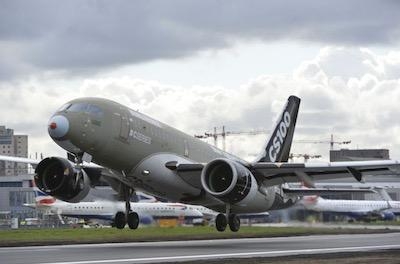Thu, Dec 31, 2020
AD 2020-26-20 Requires Inspecting The Air Extraction Duct Installation
The FAA is adopting a new airworthiness directive (AD) for certain Airbus Canada Limited Partnership Model BD-500-1A10 and BD-500-1A11 airplanes.

This AD was prompted by a report that during installation on the final assembly line, a foreign object damage (FOD) protective end cap was not removed from an extraction duct of the crew oxygen system. The protective end cap must be removed to prevent a build-up of oxygen under the flight deck floor, which is a fire risk. This AD requires inspecting the air extraction duct installation to determine if a protective end cap is installed, and removing any protective end cap found. The FAA is issuing this AD to address the unsafe condition on these products. This AD is effective February 3, 2021.
Supplementary Information: Transport Canada Civil Aviation (TCCA), which is the aviation authority for Canada, has issued Canadian AD CF-2020-19, dated May 26, 2020 (also referred to after this as the Mandatory Continuing Airworthiness Information, or the MCAI), to correct an unsafe condition for certain Airbus Canada Limited Partnership Model BD-500-1A10 and BD-500-1A11 airplanes. You may examine the MCAI in the AD docket on the internet at https://www.regulations.gov by searching for and locating Docket No. FAA-2020-0683.

The FAA issued a notice of proposed rulemaking (NPRM) to amend 14 CFR part 39 by adding an AD that would apply to certain Airbus Canada Limited Partnership Model BD-500-1A10 and BD-500-1A11 airplanes. The NPRM published in the Federal Register on August 11, 2020 (85 FR 48480). The NPRM was prompted by a report that during installation on the final assembly line, a FOD protective end cap was not removed from an extraction duct of the crew oxygen system. The protective end cap must be removed to prevent a build-up of oxygen under the flight deck floor, which is a fire risk.
The NPRM proposed to require inspecting the air extraction duct installation to determine if a protective end cap is installed, and removing any protective end cap found. The FAA is issuing this AD to address this possible ignition source, which could result in an oxygen-fed fire. See the MCAI for additional background information.
More News
Aero Linx: Model Aeronautical Association of Australia MAAA clubs are about fun flying, camaraderie and community. For over 75 years, the MAAA has been Australia’s largest fl>[...]
Touchdown Zone Lighting Two rows of transverse light bars located symmetrically about the runway centerline normally at 100 foot intervals. The basic system extends 3,000 feet alon>[...]
“Discovery and innovation are central to our mission at Virgin Galactic. We’re excited to build on our successful record of facilitating scientific experiments in subor>[...]
How To Get A Story On Aero-TV News/Feature Programming How do I submit a story idea or lead to Aero-TV? If you would like to submit a story idea or lead, please contact Jim Campbel>[...]
Student Pilot Reported That During Rotation, “All Of A Sudden The Back Of The Plane Kicked To The Right..." Analysis: The student pilot reported that during rotation, “>[...]
 ANN's Daily Aero-Linx (05.02.24)
ANN's Daily Aero-Linx (05.02.24) ANN's Daily Aero-Term (05.02.24): Touchdown Zone Lighting
ANN's Daily Aero-Term (05.02.24): Touchdown Zone Lighting Aero-News: Quote of the Day (05.02.24)
Aero-News: Quote of the Day (05.02.24) ANN FAQ: Contributing To Aero-TV
ANN FAQ: Contributing To Aero-TV NTSB Final Report: Cirrus Design Corp SR20
NTSB Final Report: Cirrus Design Corp SR20




